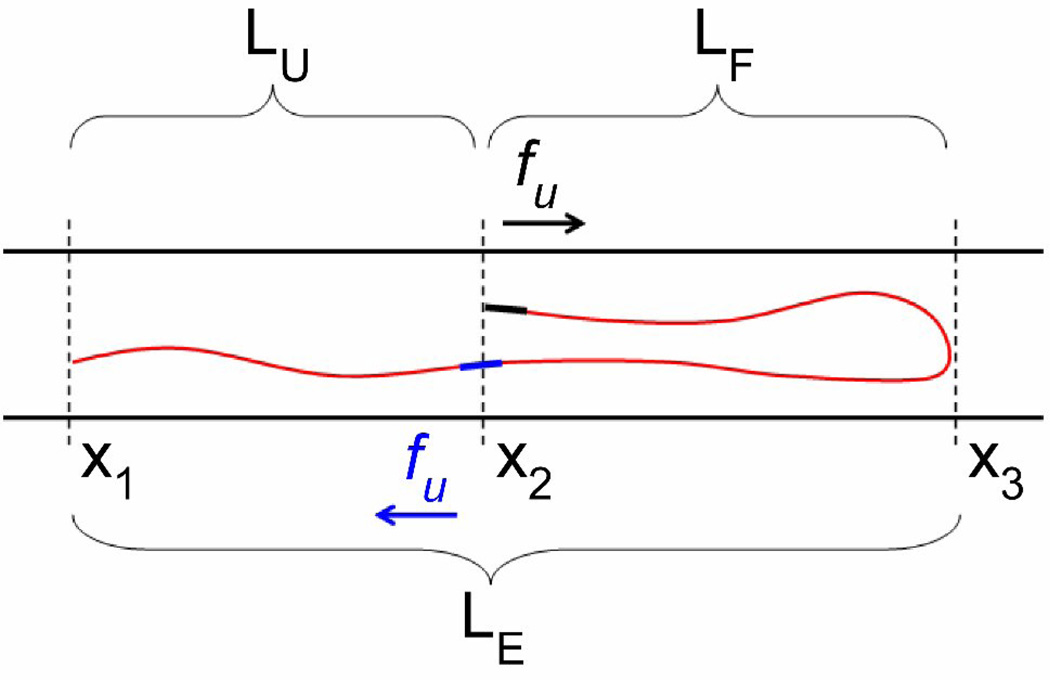Figure 2.
In this cartoon of folded DNA in a nanochannel, the local bending of the molecule is greatly minimized. The folded state is characterized by the projected length of the unfolded (LU) and folded (LF) portions of the molecule along the channel axis. The unfolding force, localized at the position x2, results from the difference in free energy between conformations in which the blue segment does or does not overlap with the upper black segment. The resulting forces, −fU and fU, acting on the upper and lower segments of the molecule, respectively are balanced by hydrodynamic frictional forces that are assumed to be proportional to the length and velocity of each segment. In our model, a contour length δC will be extended along the channel axis by an amount δL = α · δC or δL = β · δC, depending on whether the segment is part of the unfolded or folded portion of the molecule

